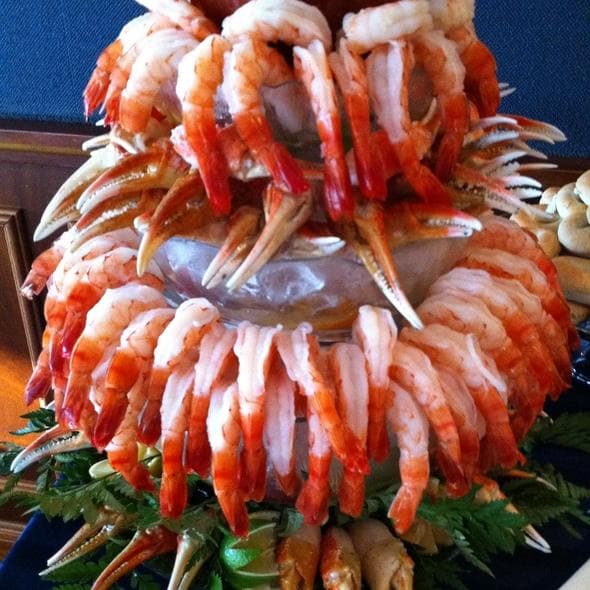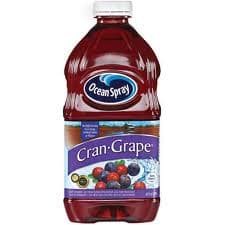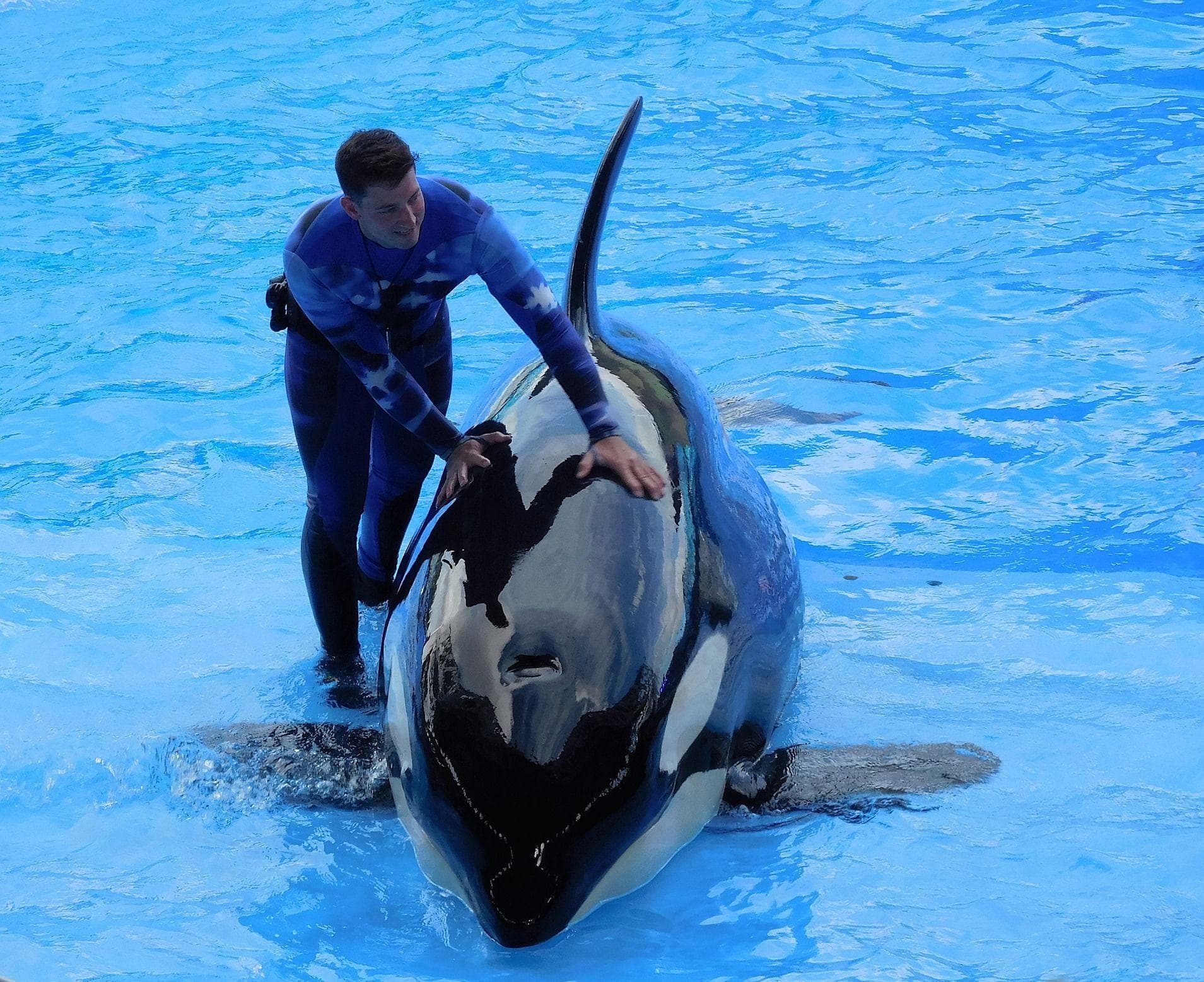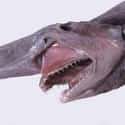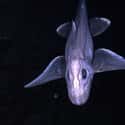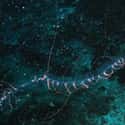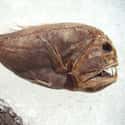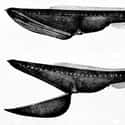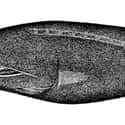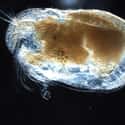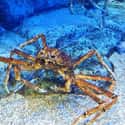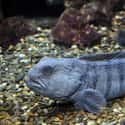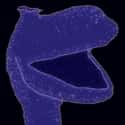-
(#1) Goblin shark
- Mitsukurina owstoni
Goblin sharks are arguably the world’s deepest living shark, making their home at more than 1,000 meters below sea level. Their standout feature, and something that makes them look astoundingly ugly, is their huge mouth. The animal's entire jaw can be projected forward to trap prey in its mouth. This is possible because the jaw is not fused to the skull, but is held in position with cartilage and ligaments.
Researchers believe this bizarre adaptation is the result of the shark’s habitat. The deep ocean has a relatively less diverse group of creatures that call it home. The fact that the goblin shark can swallow a wide range of different sized prey gives it the chance to make the most of its scarce hunting grounds.
-
(#2) Chimaera
- Chimaeriformes
Officially known as chimaeras, ghost sharks are a type of fish that are incredibly rare. The fact they live so deep in the ocean and only survive in small numbers means it is difficult for scientists to video them. Despite their name, they are not actually sharks and belong to a genus of creatures that split off from the larger predatory fish some 300 million years ago.
Like many other deep sea creatures, they use electroreception to locate prey and have a venomous spine on their dorsal fin.
-
(#3) Erenna
The erenna is a species of siphonophores that has been found living in the deep sea off the coast of California. Similar to a jellyfish, they appear to be translucent and have a gooey texture. However, they differ in one important aspect.
The erenna is not just one single organism but is actually made up of hundreds of tiny creatures called zooids that work together as a whole. This particular species uses bioluminescent red light to attract prey before stinging its victims to death.
-
(#4) Fangtooth
- Anoplogaster brachycera
One look at a fangtooth fish and its easy to categorize them amongst the monsters of the deep. These creatures are relatively harmless to humans as they can only grow to around 15 centimeters in length. That doesn’t make them any less daunting for other deep sea living fish, though.
With the largest teeth in proportion to their body out of all marine life, they are capable hunters who are able to kill other fish up to one-third their size. The horrific looking creatures have been seen living at depths of 5,000 meters.
-
(#5) Pelican eel
- Eurypharynx pelecanoides
What little is known of Pelican eels comes from a study of the very few specimens that have been caught in fishing nets. These creatures, found living thousands of meters below sea level and just above the ocean floor, are not actually eels as their name suggests.
In fact, they are a member of the genus Eurypharynx and don’t have a swim bladder, scales, or pelvic fins like true eels. Their most remarkable feature is a hinged mouth that is several times larger than their body. This huge structure allows the pelican eel to eat prey that is bigger than itself, although it primarily subsists on small crustaceans and squids.
-
(#6) Chondrocladia lyra
What makes the harp sponge such an unusual creature, apart from its frankly bizarre appearance, is the fact that it is carnivorous. The vast majority of coral species get their nutrients from algae, depending completely on photosynthetic lifeforms for food.
This particular example has a different method. Using tiny hooks that work in a similar way to Velcro, it is able to trap small creatures living on the ocean floor. Thin membranes then surround the trapped organisms as chemicals slowly begin to break them down.
-
(#7) Flabby whalefish
- Cetomimidae
Flabby whalefish are some of the deepest living fish in the entire ocean. They can be found throughout the southern hemisphere and live at depths of up to 3,500 meters below sea level. As there is little light down there, they only have vestigial eyes and use a lateral line system for navigation and vibration sensing pores to find prey.
The females of the species are typically colored in bright red and have no ribs, allowing their stomachs to bloat to massive sizes. This gives the predator the opportunity to eat prey that would otherwise be too large to digest. Adult males do not eat at all as their jaws are fused shut, instead relying on the leftover shells that they consumed as an infant for nutrients.
-
(#8) Pompeii worm
- Alvinella pompejana
The Pompeii worm is a species of polychaete (marine worms) that lives on the floor of the Pacific Ocean. Measuring just 13 centimeters long in most instances, they are bizarre-looking with their backsides covered in thousands of tiny bristles. They feed on microbes given off by hydrothermal vents, meaning they have to withstand water that is close to boiling point temperatures.
Researchers believe that the bristles may be responsible for allowing the creatures to survive in this harsh environment. This is because the hairs are actually bacteria that work in symbiosis with the worm to provide thermal insulation. In turn, the Pompeii worm secretes a mucus that feeds their back-dwelling bacteria.
-
(#9) Swima bombiviridis
Researchers only discovered this species of worm very recently when robots uncovered a collection of the segmented worms from the ocean floor near California. The almost see-through creatures use tiny bristles to swim through the water at some 3,000 meters below the surface.
They also have a set of four gills that are bioluminescent and glow green. Oddly, the worms can discard these bioluminescent parts from their bodies, leaving them in the ocean to cause distractions so that they can escape predators. This is where the name comes from, as the green gills resemble small illuminated bombs.
-
(#10) Giant Ostracod
Often called seed shrimps because they literally look like a shrimp trapped inside a seed pod, ostracods are actually a different species of invertebrate. The giant ostracod can reach sizes of up to 2.5 centimeters and its hinged shell can open and close in a similar fashion to a clam, allowing it to hide away from predators.
This crazy see-through water animal uses its large antennae to row through the water and has huge eyes that it uses to pick up tiny amounts of light in the deep ocean.
-
(#11) Japanese spider crab
- Macrocheira kaempferi
The giant spider crab is the stuff of nightmares. Believed to be the largest arthropod in the world, this underwater insect look-alike is capable of growing up to 4 meters in length. They use those large appendages foraging the ocean floors near Australia and Japan.
Despite their large size, they are still susceptible to a wide range of predators, especially when they have to ditch their shell as they grow in size. Some giant spider crabs have even been seen using algae and seaweed as camouflage to predators.
-
(#12) Atlantic Wolffish
The Atlantic wolffish lives on the hard ocean floor and rarely leaves its rocky habitat unless necessary. The low-level fish normally has blue-grey or purple coloring and is unique thanks to its coned fangs and the rows of crushing teeth that arm its jaw. The bizarre looking creature is also able to produce its own natural antifreeze to help keep blood flowing in the freezing cold temperatures where it lives.
Unfortunately, the number of wolffish is depleting rapidly due to fishing, which could make for green crab and urchin population increases, as these are among the wolffish's diet.
-
(#13) Predatory tunicate
- Megalodicopia hians
Looking like some kind of underwater Venus flytrap, the predatory tunicate is a unique sea squirt that researchers discovered near California. Unlike its relatives that get their nutrients from filter feeding, the predatory tunicate entices small organisms into its gaping mouth-like structure.
Once inside, the tunicate quickly shuts its "lips" trapping the creatures inside its hood with no chance of escape. Then the sea squirt begins digestion. The mouth will remain closed for the duration of feeding and only opens again once it is ready to eat.
New Random Displays Display All By Ranking
About This Tool
Scientists know more about the ocean than about space. Among the more than 200,000 species we know, many have adapted to the high-pressure and dark seabed environment with peculiar camouflage, foraging methods, and mating habits. The ocean with a depth of more than 200 meters is dark all year round, with high salinity, high pressure, low temperature, aquatic plants cannot grow there, and animal species and numbers are very poor.
Here the random tool introduced13 gnarly creatures that have adapted the life in the deep ocean. Most of the deep-sea creatures are permeable because of their soft body, which can be well balanced with external pressure, and their eyes or tactile organs are highly developed.
Our data comes from Ranker, If you want to participate in the ranking of items displayed on this page, please click here.

